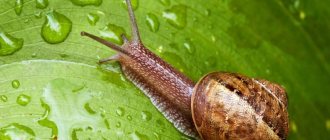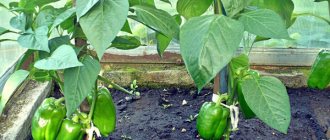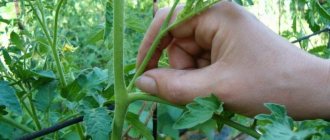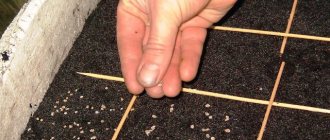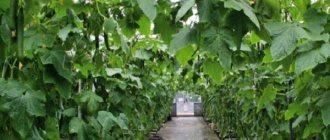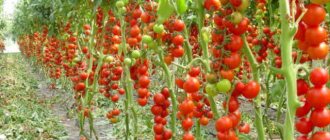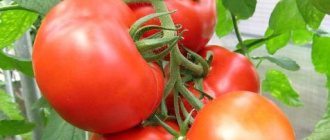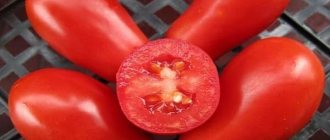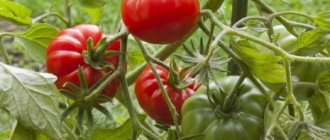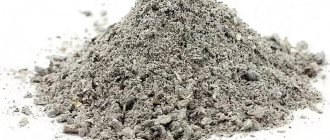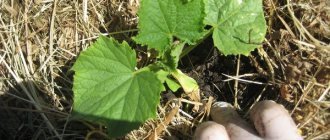Disputes between gardeners about whether it is necessary to plant peppers are ongoing. Many vegetable growers with extensive experience in growing different varieties of nightshades claim that it is necessary to remove side shoots, but not always. It all depends on what type of plants they are - short or tall, and in what conditions they are grown. Therefore, before planting peppers, the farmer needs to study the nuances of the procedure, find out when it will be useful, and in what cases it can harm the vegetable crop.
How to shape peppers
Experienced vegetable growers consider the formation of sweet peppers a necessary technique for increasing the yield and size of the fruit. Beginners practically do not use it, believing that even without the formation of a bush, pepper will produce a large harvest if heat, lighting, watering and fertilizing are provided. Forming a pepper is not a one-time process of cutting off vegetative shoots or pinching leaves. It includes several techniques and is carried out in several stages.
Pepper formation
A well-formed pepper bush will delight the owner with a lush appearance and a rich, mouth-watering harvest.
The process of pepper formation depends on the characteristics of its variety:
- On tall varieties, pinching and trimming of excess shoots is done.
- For medium-sized varieties of pepper, formation will consist of removing the lower and barren side shoots. This will improve plant lighting and air circulation.
- Low-growing, dwarf types of peppers do not need shaping at all, they are already good. Or it is enough to cut out weak, sterile and inward-growing shoots.
You should pinch out excess shoots very carefully, neatly and competently, carefully following all the rules:
- Removing flower crown buds . As soon as the main stem of the plant reaches a height of 20-25 cm, it begins to branch. At the site of the branches, a flower bud is formed. It is this that should be removed as early as possible so that the branching process proceeds correctly.
- Pinching out unnecessary shoots . An ideal pepper should consist of a stem and 2-3 strong shoots that come from the fork of the crown bud. It would be advisable to remove all other shoots and branches. They are removed by cutting off the top or growing point.
- Removing excess shoots and lower leaves . While growing peppers in a greenhouse, periodically inspect your pet for the growth of barren (empty) shoots. They need to be removed. Most often, unnecessary branches are formed just below the branching of the main stem of the pepper. In this area we should also destroy all the leaves that shade the planting and impair pollination.
- Pinching skeletal branches . This procedure should be carried out after collecting a sufficient number of fruits, this will speed up the ripening of the rest of the crop. All growth points located on the main stems of the pepper should be pinched. After the procedure, the growth of the pepper stops, and all the energy of the plant is spent on feeding the ripening fruits.
Which pepper does not require shaping?
There is no need to form the following low-growing, weakly branching pepper varieties and hybrids.
- Low-branching pepper varieties : Florida, Barguzin, Topolin, Zodiac, Alyosha Popovich, Bagration, Lumina (Belozerka), Dobryak, Victoria, Bogatyr, Ilya Muromets, Lastochka, Gift of Moldova, Dobrynya Nikitich and others.
- Weakly branching pepper hybrids : Pinocchio F1, Claudio F1, Othello F1, Goodwin F1, Gemini F1, Maxim F1, Mercury F1 and others.
Growing peppers in a greenhouse
When transferred to a greenhouse, the pepper is planted so that it remains possible to increase the volume of the bush by 2-3 branches. The planting scheme for varieties and hybrids with high bushiness can be 40-50x70-80, i.e. 2-5 or 3-6 pieces per sq. m. If the bushiness is average, then per sq. m planted from 6 to 8 pepper bushes.
The formation of a pepper bush involves pinching, removing excess barren shoots and pruning. After planting and establishment, the bushes are inspected to ensure they are healthy and pest-free. Barren lower shoots and leaves located on the trunk up to the first fork are removed, providing the bushes with normal ventilation and lighting.
The pepper branches formed after branching are called lateral. These are branches of the first order, or skeletal. Each side branch first grows from a central stem that has leaves. At the base of the petioles of these leaves (in the axil) shoots appear. These are stepchildren. They are removed by pinching.
How temperature and humidity affect pinching
The shoots on pepper seedlings are not removed in very hot weather combined with high humidity. Such conditions create a favorable environment for the development of fungal diseases and root rotting.
It is better to remove unnecessary shoots in the morning so that by evening the wounds heal and dry out. It would not be a bad idea to sprinkle the cracks with wood ash.
Attention! If pruning of shoots is done incorrectly, this can lead to a lack of flowering or complete death of the plant.
How to form peppers in a greenhouse and open ground
The formation of pepper in a greenhouse is mandatory for all types of this plant. For each variety, this event may be slightly different. For example, when growing sweet peppers, you have to completely remove the shoots and pinch off the top part.
If you have to prune short varieties, then only a small part of the shoots, which are located lowest, is removed.
What varieties need to be formed
Before growing peppers in open ground or a greenhouse, you need to understand what types of plants need it. Gardeners are engaged in growing varieties that can vary in duration of ripening. The following types of peppers are distinguished:
- Ultra-early - technical maturity is achieved in exactly three months.
- Early – the fruits ripen within 100 days.
- Mid-early - the first peppers ripen 130 days after planting.
- Late - ripens five months after planting.
Also, bushes may differ in their height. All varieties can be divided into:
- dwarf - below 40-45 cm;
- short - grow up to 50-60 cm;
- medium-sized - the height of the bushes does not exceed 100 cm;
- tall - the average height of an adult plant is about 200 cm.
The formation of peppers is carried out for all varieties except dwarf ones. They bear fruit well even without pruning the bushes, provided that the planting scheme has been fully followed.
When pinching low-growing bushes, it is enough to trim off weak shoots that grow inward. A tall pepper bush needs a lot of nutrients. If it grows greatly during growth, then ideal conditions will be created for the appearance of dangerous pests and diseases. Therefore, pruning of such bushes is mandatory in order to protect the plant and improve its nutrition.
Formation methods
To understand how to form peppers in open ground, you need to familiarize yourself with the basic methods of pinching. During pruning of many varieties, various methods are used. There are three main methods for pruning bushes.
In one stem
Quite often this option is used if a lot of seedlings are planted, but the bed is not very spacious. By forming a bush in this way, the plant will receive more light, since most of the shoots and leaves will be removed.
To form a bush in this way, it is necessary to break out all the stepsons and their twins that appear during the bifurcation of the stems. Only all the flower clusters are left on the plant.
In two stems
This method is the most popular, as it is suitable for many varieties of pepper. In this way, you can get a small and powerful bush that can easily withstand the weight of even the largest fruits.
During the formation of the pepper into two stems, not only the main stem is left, but also its first stepson. It is this that develops faster than other stems. All other shoots need to be gotten rid of.
Three stems
This option is used when you have to grow few seedlings on a large plot. To form a bush with three stems, you must adhere to the following recommendations:
- Two stepsons are left on the plant, which are located below the first flower cluster.
- The bush is carefully examined and another well-developed and strong stepson is selected.
- All remaining stepsons are deleted.
Recommendations
Many people do not know how to grow peppers in a greenhouse. There are a number of specific rules that will help you perform this procedure correctly:
- You should not plant peppers if the weather outside is too hot and dry for several days. In this case, it is better to leave the leaves on the bushes so that they can protect the plant from burning out. The formation of a pepper bush in a greenhouse during such a period can lead to its death. Having removed all excess shoots, the soil and bushes will lose additional protection from the sun.
- Pruning tools can be carriers of dangerous infections. Before the procedure, it is recommended to disinfect them with antiseptics.
- Pepper planting is not carried out if the height of the bush is less than 20-30 cm. This can negatively affect growth and fruiting.
- You cannot form a bush if it is sick. Because of this, he may die.
- It is not recommended to plant peppers if they are planted too sparsely. The distance between each bush should be at least 25 cm. Bushes that have no other plants near them should be left with dense greenery.
Dependence of the pinching scheme on temperature and humidity conditions
The temperature and humidity conditions established in the greenhouse have a significant impact on the pinching pattern. Since shoots grow faster in warm and humid microclimates, all shoots below the branching have to be removed.
Otherwise, the thickened crown would be poorly ventilated, which in conditions of high humidity would lead to the development of diseases:
- white rot: appears as white spots on the stem at the root;
- soft bacterial rot: brown spots appear on the fruits;
- gray rot: appears as gray spots on the fruit.
When pinching, adhere to the following rules:
- The shoots are cut with a sharpened tool. A dull blade causes more damage to the plant.
- After processing each bush, the tool is disinfected, otherwise there is a risk of spreading the disease of one plant to the entire area.
Purpose of the procedure
Pinching is a manipulation aimed at obtaining the maximum possible yield of vegetables, including bell peppers. This is the removal of unnecessary lateral processes from plants in order to provide the fruits with adequate nutrition and direct all the forces of the vegetable crop to their formation.
For which varieties is it required?
The main role in the process of pinching peppers is played by the height of the plants. Pepper bushes, which belong to tall and medium-sized varieties, cannot do without this manipulation, regardless of where the vegetable crop is grown: in a greenhouse or on open ground.
Pinching pepper bushes is one of the means of solving the problem of dense plantings, in which densely growing plants lack light.
Gardeners rarely decide to plant peppers of low-growing and dwarf varieties, because this procedure is useless for them in most cases. This is due to the fact that low pepper bushes do not have strong shoots: they are often weak, non-fruitful and do not affect the nutrition of the central vegetative part.
What is stepsoning?
Pinching is the process of removing weakened, withered shoots and leaves from the main stem. The nutrients received by the plant should go to the ripening fruits, and not feed the empty leaves without any benefit. The so-called formation of pepper bushes takes quite a long time.
The operation is most relevant for high and medium grades. This ensures free access of sunlight to the fruits and free air flow at the bottom of the plants.
Procedure for peppers in a greenhouse
When growing sweet peppers in greenhouses, the pinching procedure begins with seedlings and continues for rooted plants.
Seedling
When grown seedlings are transferred to a greenhouse, initial pinching is carried out as soon as its height reaches 15 cm. First of all, the upper growth points of such seedlings are removed, which makes it possible to enhance the branching process and gives impetus to the correct formation of young plants.
Mature plants
Removing excess shoots will increase yield
In heated greenhouses, pepper bushes grow more spreadingly than in open soil, so they require careful removal of excess shoots, which includes:
- pruning side shoots
- removal of the first flower bud,
- removal of tops.
Trimming side shoots
The stepsoning scheme involves selecting the 2 strongest shoots from among the main ones in the first order. Usually, to the ten leaves formed on the entire stem, there are about 4 such shoots in the first tier. Delete everything except the selected 2.
After the procedure, branching and growth of second-order shoots and subsequent ones begin, which produce the harvest. Subsequently, at each fork of the next order, one lateral shoot is left, and the rest are pinched. Also, only one fruit is left in each internode, the remaining buds are removed.
Removing a flower bud
The next stage of pinching peppers in a greenhouse is to remove the crown bud in the fork, since the fruit ripening in this place gives impetus to the bush producing a special substance - an inhibitor that prevents the development of juicy and large vegetables.
Trimming the tops
The tops of the shoots are removed approximately at the end of the growing season, leaving the formed ovaries. The procedure accelerates the ripening of vegetables and extends the period of fruiting, stopping the growth of the bush itself.
Advantages and disadvantages of stepsoning
To decide whether it is necessary to pluck peppers, you should first familiarize yourself with the pros and cons that this operation will cause.
Pros:
- the yield of peppers will increase both qualitatively and quantitatively for the better;
- the size of the fruits themselves will also increase;
- the number of ovaries will increase;
- The flowering period of peppers will become longer, which will have a positive effect on the number of fruits.
Minuses:
- the bush grows at a slower pace;
- Failure to follow the rules of pinching can lead to the death of the plant.
Negative aspects can be completely eliminated if you follow the recommendations.
Growing peppers in open ground
Pruning of peppers grown in open soil begins with the removal of the crown bud, which gives better growth and development of the vegetable crop. Only after removing the flower bud in the fork do they continue pinching according to the following scheme:
- trim off excess shoots on the sides,
- remove excess branches as soon as the number of leaves on the stem reaches a dozen, leaving 2-3 strong shoots,
- cut off the tops of weak shoots,
- pluck the shoots located above the first leaf.
Next, the procedure resembles that used for vegetables grown in greenhouses: the buds formed in the internodes and sterile are removed.
Is stepsoning really necessary?
Gardeners are divided into two camps: some believe that peppers should be pinched, while others believe that this procedure harms the plant.
The majority, however, give a positive answer to the question “is it necessary to grow peppers?” You just need to do this carefully and in compliance with the necessary rules. Then the development of the bush will go correctly, and the number of full-fledged fruits will increase several times.
Seedling peppers
Planting peppers is an integral procedure when growing vegetables, if you want to get a good harvest and vegetables of the correct and beautiful shape.
Purpose of the procedure
Pinching is a manipulation aimed at obtaining the maximum possible yield of vegetables, including bell peppers. This is the removal of unnecessary lateral processes from plants in order to provide the fruits with adequate nutrition and direct all the forces of the vegetable crop to their formation.
For which varieties is it required?
The main role in the process of pinching peppers is played by the height of the plants. Pepper bushes, which belong to tall and medium-sized varieties, cannot do without this manipulation, regardless of where the vegetable crop is grown: in a greenhouse or on open ground.
Pinching pepper bushes is one of the means of solving the problem of dense plantings, in which densely growing plants lack light.
Gardeners rarely decide to plant peppers of low-growing and dwarf varieties, because this procedure is useless for them in most cases. This is due to the fact that low pepper bushes do not have strong shoots: they are often weak, non-fruitful and do not affect the nutrition of the central vegetative part.
Procedure for peppers in a greenhouse
When growing sweet peppers in greenhouses, the pinching procedure begins with seedlings and continues for rooted plants.
Seedling
When grown seedlings are transferred to a greenhouse, initial pinching is carried out as soon as its height reaches 15 cm. First of all, the upper growth points of such seedlings are removed, which makes it possible to enhance the branching process and gives impetus to the correct formation of young plants.
Mature plants
Removing excess shoots will increase yield
In heated greenhouses, pepper bushes grow more spreadingly than in open soil, so they require careful removal of excess shoots, which includes:
- pruning side shoots
- removal of the first flower bud,
- removal of tops.
Trimming side shoots
The stepsoning scheme involves selecting the 2 strongest shoots from among the main ones in the first order. Usually, to the ten leaves formed on the entire stem, there are about 4 such shoots in the first tier. Delete everything except the selected 2.
After the procedure, branching and growth of second-order shoots and subsequent ones begin, which produce the harvest. Subsequently, at each fork of the next order, one lateral shoot is left, and the rest are pinched. Also, only one fruit is left in each internode, the remaining buds are removed.
Removing a flower bud
The next stage of pinching peppers in a greenhouse is to remove the crown bud in the fork, since the fruit ripening in this place gives impetus to the bush producing a special substance - an inhibitor that prevents the development of juicy and large vegetables.
Trimming the tops
The tops of the shoots are removed approximately at the end of the growing season, leaving the formed ovaries. The procedure accelerates the ripening of vegetables and extends the period of fruiting, stopping the growth of the bush itself.
Growing peppers in open ground
Pruning of peppers grown in open soil begins with the removal of the crown bud, which gives better growth and development of the vegetable crop. Only after removing the flower bud in the fork do they continue pinching according to the following scheme:
- trim off excess shoots on the sides,
- remove excess branches as soon as the number of leaves on the stem reaches a dozen, leaving 2-3 strong shoots,
- cut off the tops of weak shoots,
- pluck the shoots located above the first leaf.
Next, the procedure resembles that used for vegetables grown in greenhouses: the buds formed in the internodes and sterile are removed.
Plot
-21 vote
+
Vote for!
—
Vote against!
Growing crops on a plot of land is a rather painstaking and labor-intensive task. Each type of plant requires special care, from the moment of growing seedlings to harvesting. Of course, any owner of a plot of land tries to rationally use every square meter of his garden. At the same time, it is important to harvest a decent harvest in the fall and thereby reduce the cost of purchasing imported vegetables for the winter. This article will discuss how to properly plant peppers in order to achieve maximum yield.
Pepper cultivation
Traditionally, gardens grow a little bit of everything. After all, the main part of the plot is planted with potatoes. After analyzing the location of the crops from the previous harvest, you can begin planting new seedlings. There is an opinion that the same crop should not be planted in the same place for two years in a row. Thus, it is possible to significantly increase the amount of harvest.
In order to get a good harvest of sweet peppers, it is necessary to perform the following tasks in strict sequence:
- buy seeds of the variety you like and carefully study the instructions prescribed by the manufacturer;
- sow seeds in the ground to grow seedlings;
- plant seedlings in separate cells for better growth and acclimatization;
- plant seedlings in the garden;
- water and fertilize;
- pinch;
- collect ripe fruits from the bush.
It would seem that you plant and water, and a little later all that remains is to collect the fruits of your labors. Actually this is not true. Each crop requires proper care and timely planting. By ridding the plant of excess, unnecessary shoots, you can achieve:
- in flowers - rapid and longer flowering;
- in fruit-bearing plants - an increase in yield due to large fruits that ripen faster.
Before planting seedlings, it is necessary to water the bed properly, and after waiting for some time, it will fluff up. Peppers should be planted in moist soil and then watered additionally. However, you need to be vigilant, since pepper is sensitive to both waterlogging and drought.
Pepper, like many crops, loves warm weather, sunlight, and moderate soil moisture. Mostly it gives good yields if it grows in the soil:
- sandy loam,
- medium loamy;
- floodplain;
- black soil
A high level of acid in the soil can be simply destructive for peppers. You can achieve the required humidity in the garden bed by placing dry grass around the root system.
In addition to arranging an irrigation system that allows life-giving moisture to be delivered to each plant, it is necessary to carry out loosening after a certain period of time. It is the periodic alternation of these two processes that will have a beneficial effect on the development of the bush, providing the root system with everything necessary.
Planting peppers
All cultures love warmth. Therefore, their planting is planned at a time when frosts and temperature drops are no longer expected. A culture such as pepper is widely used in cooking, raw and canned. There are more than enough colors (red, yellow, green, orange, dark green) and configurations of these fruits. They may take the form:
- cone-shaped;
- ovoid;
- pyramidal;
- trunk-shaped;
- tomato-shaped;
- cherry-shaped.
Interesting to know: it contains more vitamin C than lemon. Doctors strongly recommend eating sweet peppers as a natural appetite stimulant. Since it is considered a dietary product, no allergic reaction occurs after taking it.
- Having planted pepper seedlings in the ground, you need to carefully monitor how they will endure this stressful movement. Do not forget that it is advisable to plant seedlings in the evening, when the heat has subsided, and be sure to water them for better acclimatization. Since the air temperature is more favorable at night, the plant will be much more comfortable acclimatizing.
- In addition to the main shoot, any plant also produces side shoots. When you have doubts about whether the peppers are growing, you need to understand that if you don’t remove them, you may not have enough strength to do everything. As a result, the fruits will be small and will not be able to ripen normally. The so-called “stepchildren” grow from buds, which are located in the axils on the stem. They, like leeches, take vitality and nutrients from the plant, and sometimes even block the path of the sun's rays.
Pepper care
Unlike tomatoes, peppers must be planted with extreme care, since this crop is quite delicate and vulnerable. Moreover, this applies to pepper of various varieties and types, both bitter and sweet. There are some peculiarities of this event, which we will consider.
Based on weather conditions, independently determine the need to water the beds after several days. The frequency of subsequent watering measures should be determined solely by the well-being of the plant. However, excessive moisture can lead to rot on the stem and fruit. And from a lack of water, the fruits will not be juicy and fleshy enough. There is a recommended frequency, namely:
- 10-15 days after planting in the ground;
- during the period when mass fruit set is recorded;
- two weeks after the formation of fruits, it is necessary to fertilize the seedlings.
The choice of feeding products must be approached with extreme caution. After all, an excessive concentration of any element can destroy the plant. This applies not only to chemical compounds, but also to those tinctures that are prepared from natural ingredients of plant or animal origin.
How to pick peppers
- As the pepper grows, you need to be alert and not miss the moment when the first stepsons appear. As a rule, this moment falls during the period of life of the pepper, when 9-11 leaves have already formed. Having carefully examined all the shoots, it is important to select the 2-3 most powerful ones, which will subsequently become the main parts of the single “skeleton” of the plant.
- Until the height of the plant reaches 25-30 cm, no action should be taken to remove stepchildren. During this period, pepper seedlings are only gaining strength and actively developing. Once the plant reaches the above mark, you should begin pinching, namely:
- the top of the bush must be removed. As a result, the pepper bush will take on a more compact shape with beautifully developing shoots on the sides;
- remove all shoots located in the lower part of the bush, leaving only 4-5 upper ones;
- On the remaining stepsons, check for the presence of shoots and prevent the appearance of new ones.
- Left stepchildren, after their full development, are capable of producing fruits of up to 20-25 pieces per bush. At the same time, the peppers will be juicy and meaty. Typically, the flower bud is located on the main stem. Ovaries are formed on almost every branch.
- In addition, there is a possibility of shoots forming where there is no ovary. At certain intervals, it is necessary to check the bush and remove fruitless shoots, as well as those that look painful or damaged. Yellow leaves are best removed. However, all these procedures must be done with extreme care, since the stem of the plant is very fragile and can be damaged.
Pepper pinching video
- Growing peppers in a greenhouse follows a similar pattern.
- Removing excess foliage from a bush is a vital process. If this is not done, then the pepper will lack sufficient sunlight. It is possible that some particularly branchy bushes will need to be tied up. Quite often it is even necessary to install some kind of support so that the bush does not break under the weight of its own fruits. This is especially important when growing tall crops.
The relationship between weather and pepper planting
- Weather conditions play an important role in the growth of pepper. If the summer turns out to be hot and rainy, then stepsons will constantly form and there is no way to do without removing them.
- In this case, the lower leaves will need to be removed to ensure sufficient ventilation to avoid the appearance of rot and various diseases. Excessive and uncontrolled growth of stepsons can lead to the fact that the root system will not receive moisture and sunlight in the required quantities, which will lead to disruption of the plant's metabolic process.
- Dry summers and lack of watering will lead to side shoots developing very slowly and incompletely. In this case, it is better to leave the lower leaves on the bush, since they will be the only way to maintain at least some moisture in the ground.
The nuances of growing peppers
Before you begin any procedure for caring for a plant, you should carefully analyze the information about the variety being grown. Breeders could have already developed a universal variety of pepper that does not need to be processed.
- You can pinch a side shoot immediately, even at the stage of its formation, and do not wait until the ovary begins to appear on it. This approach will allow you to form a compact bush and obtain large-sized fruits.
- It is better not to touch a pepper plant that looks sick at all. Any mechanical damage can further aggravate its deplorable condition or lead to death.
- A crop like pepper prefers group planting. They love to grow together and cannot stand loneliness. If there are not as many seedlings as we would like, and the planting ends up being sparse, then in this case it is not worth removing the side shoots at all.
- During the period of rapid growing season, the bushes should be pruned repeatedly, shortening as much as possible the shoots that are longer than the rest. This action will minimize darkened areas on the branches, which will contribute to the rapid ripening of fruits. It is advisable to carry out the procedure at least once every 10-14 days, as well as after harvesting.
- Peppers can be grown both in open ground and in greenhouses. Each of the conditions has both its pros and cons. But if everything is done correctly and in a timely manner, you will get an excellent harvest even if the required temperatures are not available. However, in the latter case, the growing season increases slightly. Due to the insufficient number of insects involved in the pollination process, you may have to carry out this activity yourself.
Pepper diseases
Pepper, like many crops, is susceptible to the spread of diseases such as:
- late blight;
- white rot;
- blackleg;
- macrosporiosis;
- crown rot;
- septoria.
Of course, if you do not take any action in a timely manner, you can lose not only part of the shoots and leaves, but also the plant as a whole.
- The fruits will look underdeveloped. In addition, the invasion of pests and other insects (aphids, Colorado potato beetles, mole crickets, slugs, etc.) will cause irreparable damage to the condition of the bush. There are some subtleties in processing the plant. For example, to combat aphids, you need to treat the bush with serum diluted with water (1½ liters of serum per 10 liters of water), after which the plant should be dusted with wood ash.
- It is also very important for peppers to have compatible neighbors in the garden, such as onions, marigolds, basil, coriander, and okra. Similar herbs growing nearby serve as a kind of protection for peppers from aphids.
- It is not recommended to plant peppers near beans, since anthracnose is on the list of possible diseases for both crops. It is important to understand that diseases can affect both young plants and adults.
Even experienced gardeners may have problems with growing peppers:
- leaf fall, lignification of stems . Flowers and even the ovary may also fall off. As a rule, the reason for this is too high a temperature, insufficient watering;
- complete absence of flowering and ovary, as well as growth inhibition. This may be preceded by cooling air temperatures, watering with too cold water, and not enough light;
- the formation of defective fruits (crooked) due to insufficient pollination of the plant flower.
Formation and pinching of bell peppers: patterns of one and two stems
Reading time: 9 minutes
Bell peppers are a favorite of many gardeners. With its compact size and relative unpretentiousness, it produces a good harvest. The fruits are rich in vitamins C, K, A, micro- and macroelements. They are stored fresh for a long time and are used for canning. Application of knowledge on how to form pepper bushes in a greenhouse and open ground will increase the yield and improve the quality of the fruit. And this is exactly what every owner of a personal plot dreams of.
Where is pinching carried out: only in a greenhouse or only in the ground
This process is carried out for all peppers, regardless of the place where they are planted. The need for the procedure is largely influenced by what variety the plant belongs to - medium or tall.
It doesn't matter whether it's open ground or a greenhouse. The frequency of planting also plays an important role. The closer the bushes are planted to each other, the more necessary the plant formation procedure becomes.
You should increase the free space around each bush to ensure its full growth. Without this, the lack of sunlight will cause disturbances in the development of fruits and their inferiority.
Why are sweet peppers formed?
Often gardeners (especially beginners) neglect the formation of peppers, believing that sufficient lighting, fertilizing, watering and treatment against parasites will provide everything necessary for a good harvest. But proper design of bushes will provide the following advantages:
- formation of a strong plant skeleton;
- removal of fruitless branches;
- preserving the plant’s strength to ripen large, juicy peppers;
- providing ventilation to prevent the development of diseases;
- creating good lighting;
- no overload of excess ovaries;
- uniform ripening;
- aesthetic appearance.
On specimens whose development is left to chance, weak peppers of different sizes will chaotically form, the ripening of which is difficult. Once formed, a harvest of ripe, healthy peppers will ripen at approximately the same time.
Value for different varieties
Not all varieties require special work equally. Be sure to form according to all the rules, using pinching, pinching, trimming excess leaves, tall varieties. The scheme involves one or two escapes. Medium-sized ones are subject to the removal of lower branches, as well as non-yielding, “fattening” branches. Formed into two or three stems. Low-growing varieties with sufficiently sparse planting do without molding. It is enough to remove diseased, twisted and barren branches. And if planted tightly, add extra leaves to provide ventilation.
Which pepper does not require shaping?
If you don’t want to do pinching and pinching, in addition to dwarf ones, you should pay attention to specially bred weakly branching varieties and hybrids: Florida, Dobryak, Bogatyr, Lastochka, Goodwin F1, Mercury F1 and many others. They form less green mass than traditional ones and form independently.
In addition, there is no need to manipulate decorative and indoor (potted) varieties of sweet and hot peppers.
General rules
Trimming of excess shoots begins when the height of the bush reaches 25-30 cm, and the number of leaves is 9-11 pieces and is carried out in several stages,
The pinching process is completed 1.5 months before the expected harvest.
What techniques are used
When forming a bell pepper bush according to any scheme, the same techniques are used. This is pinching, pinching, pruning. It is important to know where and on which branches each technique is needed.
Stepsoning
A stepson is a shoot formed in the axil of a leaf or at the base of a formed shoot. Stepchildren must be removed completely, leaving a “stump” of no more than three millimeters. As a rule, these are weak branches that will not produce normal fruits. If you leave them, the plant will spend extra energy, which it could direct to full-fledged peppers. There is no need to plant dwarf and ornamental varieties.
Topping
Pinching allows you to stop further development of the shoot by removing the growing point. This eliminates unnecessary side branches. Pinching is carried out taking into account that the ovary and one or two leaves should remain on the shoot. You cannot leave only the flower bud and remove all the leaves. In this case, the plant will not have enough strength to set fruit.
You need to pinch out shoots of the second and third order, forming a neat, well-fruiting bush. In the same way, the growth points of all shoots are removed when the required number of fruits on the plant is reached.
Trimming
Pruning involves removing parts of the plant using special tools (garden shears, knife, pruning shears...). What to trim from peppers:
- shoots and leaves below the first fork;
- barren, “fat” branches;
- diseased, twisted shoots inside the crown;
- too densely growing leaves that interfere with the penetration of light.
You should also trim the first, royal bud. It forms in the middle of the first fork; if left, it will produce the largest pepper, but will take a lot of effort to form the remaining fruits. It is advisable to leave the royal bud to obtain seeds - in it they ripen healthy and full-fledged.
Further care of the plant
Growing peppers, eggplants and other garden crops will not give the desired result if the plants are not properly cared for in the future:
- Watering is regular, as the top layer of soil dries out.
- Loosening - after each watering.
- Weeding - timely removal of weeds.
- Fertilizer - nitrogen compounds are applied in May-July, potassium and phosphorus are applied in August-September.
The last pinching takes place around the beginning of September.
How the formation process goes: timing and technology
The formation of sweet pepper begins when its first fork appears. Typically the plant reaches 15–20 centimeters in height. This growth occurs at the seedling stage. Here, pinching of excess shoots of the first order is carried out, as well as pruning of all shoots and leaves formed below the level of the fork. The crown bud must also be removed at this stage.
After the skeletal branches of the plant get stronger and increase the amount of green mass, they are planted in a greenhouse or open ground.
In the greenhouse
There is no need to touch the bush immediately after planting; time will pass until it takes root and gets stronger. After this, you can inspect the bush for diseased, yellowed or, conversely, overgrown shoots and leaves and remove them.
When forks appear on shoots of the first order, formation is carried out according to the pattern of one or two stems. The first option is for tall, compactly planted bushes. The second is for middle-aged people. The three-stem arrangement in a greenhouse is rarely used due to limited space. For convenience, it is recommended to install trellises and fix shoots to them so that they take up less space and do not break under the weight of the fruit.
In the open ground
When planted in open ground, the plant receives more nutrients, more soil, light and air than in a greenhouse. Therefore, it does not require such rigid molding as in a greenhouse. Low-growing and low-leaved medium-sized varieties are not formed here at all. Tall and hybrids have two stems, medium-sized ones have two or three. In general, the scheme is the same as when growing in a greenhouse.
Features of pinching
Each crop has its own varietal characteristics. Therefore, the procedure for each variety may have its own distinctive characteristics.
Low grades
Peeling is carried out so that the pepper has the highest quality and best taste characteristics. For pinching to be successful in low varieties, it is necessary to remove the shoots from above and leave up to seven of the strongest ones. All remaining leaves must be removed so that they do not thicken the bush. This will improve ventilation and increase the availability of light. Low varieties often require staking.
Pepper bushes love light and are always drawn to it. They are also lovers of neighbors and cannot tolerate large gaps between each other. They usually grow fifteen centimeters from each other.
What care does bell pepper need after the procedure?
Overzealous molding can harm the plant and rob it of all its strength to grow. After pruning, pinching and pinching, it is necessary to give several days for recovery and rest. For the same reason, you should not remove everything unnecessary from the plant at the same time. It is better to do this in two or three stages at intervals of 3–4 days. If you regularly inspect the bush and carry out the necessary manipulations, then such large-scale shaping will not be necessary.
On the day of the shaping procedure, it is not recommended to water, spray, fertilize, or treat peppers against parasites unless absolutely necessary. The bush is weakened in order to properly absorb nutrients and chemicals. And contact with water can lead to rotting of damaged stems.
When the peppers shoot
The emerging shoots must be removed when they reach 3-4 cm in length. This will allow you to cut off the shoots without damaging the main stem. If the stepsons are more than 5 cm long, the plant will experience stress and will take longer to recover from the procedure.
It is forbidden to carry out pinching earlier than 2 weeks after transplanting the peppers to a permanent place. They must have time to adapt to new conditions and get stronger.
Peppers that reach a height of at least 30 cm and have formed about 9-11 leaves are sown. Removing shoots from younger plants can lead to their death. Also, pinching should not be carried out during plant diseases.
Stepchildren are removed throughout the season when new lateral stems appear on the plants.
Bushes are inspected 2 times a week. In a greenhouse - more often, since with increased humidity and temperature, new stepsons form faster.
Possible errors and ways to fix them
Beginners and experienced gardeners make mistakes. When shaping peppers, the following nuances may arise:
- Removing all leaves near the bud. In this case, the ovary is unlikely to occur, because the flowers will have nowhere to take nutrients from. The optimal scheme involves two leaves for each bud.
- Leaving shoots on the plant from which all the fruits have already been removed. These empty shoots will take away the strength of the rest of the plant, so they must be removed immediately after picking the peppers.
- Lack of fruit load control. The maximum number of peppers that a bush can produce is 20–25 pieces (depending on the variety and the chosen formation scheme). Once this number of ovaries is reached, it is necessary to pinch the tops of the shoots. If the plant continues to develop and bloom, it will not allow the fruits to fully ripen.
- Excessive or insufficient removal of leaves. In hot climates, the lower leaves should be left to provide natural shade to the soil. In a damp climate, on the contrary, remove it to ensure air access to the soil.
- Leaving excessive green mass. Numerous leaves, even healthy ones, take away nutrients from the fruit and also interfere with the access of light and air. As was written above, the optimal ratio is two leaves per fruit. The rest should be deleted.
The formation of a bell pepper bush is an important stage that should not be neglected. It is this that allows you to grow a rich and beautiful harvest even in regions with an unfavorable climate.
Why do you need to carry out stepsoning?
It often seems that there is nothing difficult to care for. You just need to plant and then water. Then, after a while, ripe fruits will appear on the bushes, which can be collected and used for food or sold on the market. But each crop is unique, and therefore requires special and proper care. Also, we must not forget about timely stepsoning.
If the plant is rid of excess and unnecessary shoots, then the following results can be achieved:
- Flowers will begin to grow much larger and flowering will take longer;
- Fruit-bearing plants will increase your harvest thanks to large fruits that ripen much faster.
Pros and cons of stepsoning
Experienced gardeners highlight many benefits of pinching bell peppers, so this procedure is popular, especially when growing in greenhouses. However, any carelessness and deviation from the rules can harm the plant, cause unnecessary trouble and reduce yield.
- Among the undeniable advantages of stepsoning are the following:
- The culture grows faster, is distinguished by its strength and resistance to diseases.
- The plant grows not in breadth, but upward, which saves space in the greenhouse and correctly distributes useful elements.
- The vegetable is characterized by increased productivity, the fruits appear large and of regular shape.
- The fruits of the stepson plant are distinguished by better taste and increased juice content (since vitamins and water are concentrated precisely on the fruit part of the pepper).
- Negative consequences after stepsoning can be:
- Stopping in development and death if the plant is not ripe and pinching was carried out at too early a stage of growth, since the bush did not have time to prepare for “life” conditions and did not get stronger.
- Increased susceptibility to disease and poor harvest if pruning standards and removal of healthy stems important for fruiting are not observed.
- Withering of a plant when pinched during illness or a period of weakness.
Recommendations for stepsoning
Do not apply to a diseased plant. His death is possible.
Carry out only when the growth of the bush exceeds the 25 cm mark. Before this, the plant goes through the peak of active development and saturation with nutrients.
Pruning must be done either in the evening, after watering, or early in the morning. The root system will be able to withstand a stressful situation only if it does not lack moisture.
Peppers are plants that love “communication” with their own kind. For proper development, they need to touch the leaves. If the bushes are planted sparsely, then the removal of excess stepsons is not carried out.
The tools used are clean and sharp. To avoid infections, the blade should be treated with a disinfectant solution after each use.
You cannot pick off the shoots of peppers. Damage to the stem is possible, which will lead to disease and death of the plant.
If you follow the described tips and rules, growing sweet peppers will turn from an exhausting task into a true pleasure.
Useful tips and common mistakes
Some of the most interesting and applicable recommendations for thinning a pepper bed include the following:
- work can begin only when the pepper has reached a height of 20–25 centimeters;
- first of all, remove the crown bud and cut off the upper shoot of the main stem, which will contribute to the development of lateral shoots;
- the formation of the crown of the bush should be carried out by cutting off the lower side shoots; they will still be in the shadow of the upper ones and will not be able to produce a rich harvest;
- Using methods of one, two or three stems, pinching is carried out;
- ensure sufficient watering and timely application of fertilizers (from May to July it is recommended to apply nitrogen-containing fertilizers, and from August to September use phosphorus and potassium fertilizers);
- loosening the soil around the peppers will become a mandatory procedure;
- in greenhouses, the growing season for peppers is somewhat longer, and therefore, when pruning, you can remove some leaves from the stems in order to prevent the density of the green cover and the development of fungal and mold infections caused by rotting of the green mass;
- The last pinching can be carried out 40–45 days before the expected end of the season, that is, approximately at the beginning of September. Then, before the onset of the first cold weather, the final batch of peppers will have time to ripen;
- It is recommended to remove removed shoots from the site so as not to cause an epidemic of any disease.
If we talk about the mistakes of novice gardeners, then it would be appropriate to mention the following common mistakes:
- If the summer season turns out to be hot and dry, then the pruning procedure is not recommended, given that the thick crown provides a kind of protection against drying out of the soil and evaporation of moisture.
- If any damage or pest invasion is detected, pinching is also prohibited, given that the plant is already damaged. Additional thinning can finally finish off a diseased bush.
- If the peppers were planted at a fairly wide distance from each other (the norm is 40–60 centimeters), then pinching is not required, because the plant will have to withstand heat, wind, fog, dew and unexpectedly cold nights alone.
- There are also pepper bushes that do not exceed 20 centimeters in height. If your green pets are one of them, then pruning is not recommended.
Find out more about such types of sweet peppers as: Golden Miracle, Gypsy, Winnie the Pooh and Tusk.
Guided by the recommendations and advice given in this article on how to correctly carry out the procedure of picking pepper bushes, at what time and under what circumstances it should or should not be carried out, you will be able to complete the task of growing healthy and productive peppers.
Purposes of stepsoning
The essence of pinching peppers grown in a greenhouse is to remove foliage and shoots on the main stem, which do not produce fruit, but at the same time draw nutrients from the plant. Purpose of stepsoning:
- molding tall bushes;
- uniform development of lateral stems;
- giving strength to fruiting shoots;
- increasing productivity;
- increase in fruit size, i.e. improving the quality of the crop;
- providing additional ventilation for vegetable crops;
- more light coming in;
- elimination of conditions favorable for the development of diseases.
Pruning pepper seedlings
Pepper care and bush formation in a greenhouse
Pepper is a rather fragile crop, so all work with it must be carried out with extreme care. This rule applies to any type of crop. Caring for peppers has its own characteristics and nuances that every summer resident should become familiar with.
Things to consider when caring for peppers:
- Abundant watering;
- Moderate feeding;
- Good illumination of each leaf;
- Tying depends on the variety.
The plant needs regular and abundant watering. It should be watered more often than tomatoes. For rapid growth, you need to pour even more water into one bush.
Optimal watering is determined by moist soil 30 cm deep.
Feeding peppers is quite a risky undertaking. If you overdo it with any element, you can lose the plant. This applies to both chemicals and organics.
The sensitivity of pepper to the lack of water is quite noticeable. If it is deficient, the fruits will simply stop developing, and the taste will sharply decrease. To retain moisture between the rows, mulching is carried out. It is also worth noting that pepper is a fairly heat-loving crop.
The tying of pepper is determined by the variety. This procedure should be carried out only with tall plants. Indeterminate varieties and hybrids require obligatory garter.

